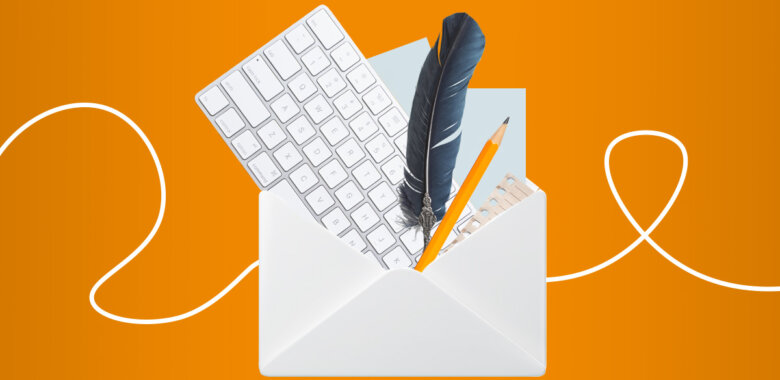Email marketing content best practices and tips
Want to know more about how write content for your campaign? For starters, learn about email etiquette — general rules on what to write about and how to do it. And if you need more tips — just continue reading. We’ll tell you about techniques to make your content writing excellent.
Define your audience and their needs
Before creating copy for your emails, before picking a subject — think about your audience. Base your content marketing strategy on customer information: demographics, buying habits, etc. Above all, consider what your customers need.
Let’s imagine you ran a jewelry store. You may find that people often buy your products to use as gifts. You can focus some of the email content around that fact. Write blog posts dedicated to gift wrapping, jewelry selection for different budgets, and promotional emails with holiday deals.
If you lack insights about your audience — ask your customers directly using surveys. Now, you may find out that answers to your questions differ. Your audience probably has several groups in it, interested in different subjects. That’s why it’s helpful to segment your customers. That way your content can be even more targeted and include relevant media.
Write a catchy subject line
Email subject lines give a peak into the content inside. And as their main goal is to entice readers, they have to be made right. Make subject lines catchy but don’t overdo it — overly expressive subject lines are one of the common email mistakes.
Some tips on how to write a subject line your readers will click on:
- Make it short so it won’t be cut off.
- Use emojis.
- Get in their feelings: play on the fear of missing out, curiosity, and other psychological reactions.
And don’t forget: the subject line should reflect, well, the email subject!
Here are a few various subject lines for your inspiration:
- You’re set for success!
- No tricks, just treats 🎃🍷🦇
- DON’T RUN OUT – Find $1M of candy promo codes
- Disclaimer: This Recipe Hits ALL The Notes
- 3-2-1: Our biggest sale is on❗️
- Oh no! Christmas is only 10 days away
Personalize
Even in mass emails you can contact people with individual messages. Consider personalization a loyalty cheat code. This includes adding their names and dynamic content.
Although it’s tempting to do this in every email, be aware that other businesses also use the same approach. As a result, subscribers can lose interest and ignore even emails with their names in the subject line.
It can look something like that:
- Farida, have you heard the news?
- Weekly summary for Noam
- Mary + Majorca = 😍
Keep your content relevant
When it comes to any media, be it an email or a blog, the content needs to be relevant. That means two things: it has to be beneficial or interesting to the audience and also up-to-date. For example, a candy shop probably shouldn’t write on the subject of climbing equipment. And a clothing brand shouldn’t entice their customer with an item that’s already sold out. Keep in mind that useful content can be shared and take it as another promotional opportunity.
Speak the language of your readers
This point encompasses several principles:
- Stick to the tone of voice of the brand. If you have a developed style guide and key messages, keep it consistent within email content and everywhere else.
- Use simple, clear language. Inclusivity is important no matter the subject. Your customers’ first language may not be English, they could also have problems understanding jokes or sarcasm. It doesn’t mean you should write as plainly as possible, but it’s good to keep in mind.
- Try seeing the topic from the point of view of the customer. Highlight benefits over features. How? If you’re sending an email about a new tablet, don’t write “Powerful 26 watt-hour battery”. Write something like “A battery that will last all day. Even if you constantly stream videos”.
Avoid the spam words
No one wants their campaign to be marked as spam. There are several ways to prevent that, like cleaning your list, providing an “unsubscribe” button, avoiding all caps, links to shady websites, and not working HTML. But you can also trigger spam filters simply by using words from certain categories:
- Overblown claims (“100% free”, “once-in-a-lifetime deal”, “extra cash”)
- Time-pressing (“do it now”, “urgent”, “24 hours only”)
- Scam-like (“this isn’t spam”, “no obligation”, “bargain”)
This isn’t to say you need to avoid words of these types entirely. Try not to put too many of them in a single email and note that they can worsen the situation if you have other spam-triggering factors.
Make sure your content is visually appealing
Even if your newsletter features the greatest of resources, your readers won’t get through walls of text. Emails need to be well structured and adapted to mobile. You can also use images or GIFs to convey meaning, and express the brand’s style and aesthetics.
















